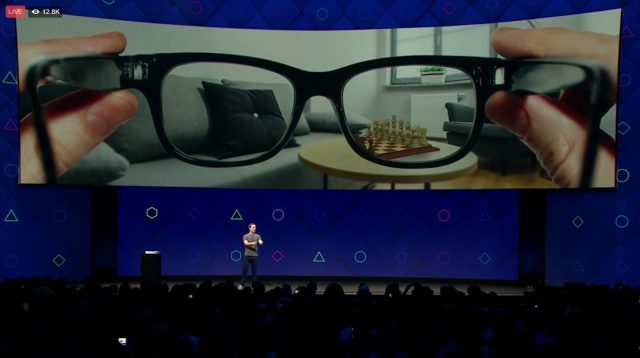F8, Facebook’s yearly developer conference, is here again for a two-day info blast from the world’s biggest social platform. Founder and CEO Mark Zuckerberg took the stage today during the keynote address to announce a new initiative that will bring about the beginnings of the company’s augmented reality (AR) platform, an “open platform” called Camera Effects that he says will form the basis of Facebook’s AR future.
Zuckerberg maintains that the smartphone will be Facebook’s first big leap into building the future of AR, triumphantly announcing that the camera will be “the first augmented reality platform.” To do this, the company is asking developers to build AR apps to work with the newly announced Camera Effects Platform, a platform that lets developers create AR effects for the Facebook camera like masks, special effects, etc.
A closed beta of the platform is launching today.
For now the AR-focused Camera Effects platform is necessarily a smartphone-only affair, but promises to provide the basis for some of the interactions that will take place in the perfect ‘glasses form-factor’ AR headset of the future.
“I used to think glasses were going to be the first mainstream augmented reality platform, and that maybe 5-10 years from now we’d get the form factor that we all want,” Zuckerberg admits. “But over the last couple of years, we’ve started to see primitive versions of each of these use-cases on our phones and camera.”


“We look at [these basic applications] and we see something different. We see the beginning of a new platform,” Zuckerberg told the crowd. “We’re not using primitive tools today because we prefer primitive tools. We’re using primitive tools because we’re still early in the journey to create better ones. And in order to create better tools, first we need an open platform where any developer in the world can build for augmented reality without having to first build their own camera and get a lot of people to use it. But when you look around at all of the different cameras that are out there today, no one has built a platform yet.”
According to Facebook’s Camera Effects page, two main tools take the center stage of the platform: AR Studio, a collection of tools for 3D artists and developers who want to create effects for photos and videos, including masks, animated frames, and other augmented reality interactions; and Frame Studio, a way of creating interesting, albeit static overlays.
Zuckerberg maintains that ‘AR building blocks’ like simultaneous localization and mapping (SLAM), 3D effects, and AI-driven object recognition are fundamental in creating apps with the Camera Effects platform in the future. To demonstrate, Zuckerberg revealed a visual concept showing the Facebook camera recognizing a number of objects in real-time, making it an interactive item like a green plant sprout flowers, or a real-world bottle of wine displaying extra information like its vintage and location of production.
“Some of these effects are going to be fun, and others are going to be useful,” he said.
“This will all go into the glasses that we want. It’s all the same technology, and this is a step to the way there,” Zuckerberg said.

